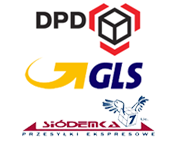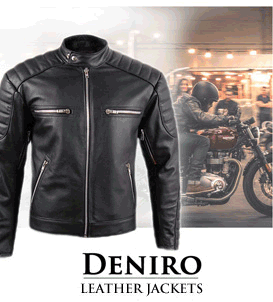Technical data
NBR characteristics (nitril butadien rubber):
Acrylonitrile rubber is a copolymer of acrylonitrile and butadiene. The quantitative relation of these compounds determines the properties of vulcanizates, and especially their oil resistance or freeze resistance. The acrylonitrile content in the rubber can amount from 18% to 50%. Together with the growth of the acrylonitrile quantity there is an increase in resistance to oil and aliphatic solvents as well as resistance to higher temperatures while simultaneous reducing resistance to low temperatures.
The acrylonitrile rubber vulcanizates are characterized with high elasticity, breaking strength, a slight permanent deformation while being pressed and with resistance to oils. Most seals used in hydraulics and pneumatics are manufactured on the basis of nitryl rubber. The temperature range of acrylonitrile rubber application amounts: from -30 to +100 C (water), short-duration to 120 C.
Nitril vulcanizates are resistant to: aliphatic hydrocarbons, propane, butane, benzine, petroleum, mineral oils and greasing substances, vegetable and animal oils, motor oils, transformer oil, fuel? oils, light fuel oils and fuels for diesel engines, nonflammable hydraulic liquids such as HSA, I-HSB (oil and water emulsions and water and oil emulsions) and HSC (mixtures of poly-glycol and water), dilute acids and lukewarm bases. Nitril vulcanizates are not resistant to: aromatic hydrocarbons (arenes), and chlorinated hydrocarbons (e.g. benzene, trichloroethylene, tetrachloromethane - tetra), esters, polar solvents, silicone oils and greasing substances, slow-burning hydraulic liquids such as HSD (based on polyester plastics and chlorinated hydrocarbons), brake fluids on the basis of glycols (blue).
NBR characteristics (nitril butadien rubber):
Acrylonitrile rubber is a copolymer of acrylonitrile and butadiene. The quantitative relation of these compounds determines the properties of vulcanizates, and especially their oil resistance or freeze resistance. The acrylonitrile content in the rubber can amount from 18% to 50%. Together with the growth of the acrylonitrile quantity there is an increase in resistance to oil and aliphatic solvents as well as resistance to higher temperatures while simultaneous reducing resistance to low temperatures.
The acrylonitrile rubber vulcanizates are characterized with high elasticity, breaking strength, a slight permanent deformation while being pressed and with resistance to oils. Most seals used in hydraulics and pneumatics are manufactured on the basis of nitryl rubber. The temperature range of acrylonitrile rubber application amounts: from -30 to +100 C (water), short-duration to 120 C.
Nitril vulcanizates are resistant to: aliphatic hydrocarbons, propane, butane, benzine, petroleum, mineral oils and greasing substances, vegetable and animal oils, motor oils, transformer oil, fuel? oils, light fuel oils and fuels for diesel engines, nonflammable hydraulic liquids such as HSA, I-HSB (oil and water emulsions and water and oil emulsions) and HSC (mixtures of poly-glycol and water), dilute acids and lukewarm bases. Nitril vulcanizates are not resistant to: aromatic hydrocarbons (arenes), and chlorinated hydrocarbons (e.g. benzene, trichloroethylene, tetrachloromethane - tetra), esters, polar solvents, silicone oils and greasing substances, slow-burning hydraulic liquids such as HSD (based on polyester plastics and chlorinated hydrocarbons), brake fluids on the basis of glycols (blue).
| GRN oil seal construction | Type of oil seal | Rubber base, hardness | Temperature range use |
Operating Environment |
 |
With dust lip | Nitrile, NBR 70 | from –30oC up to +100oC |
grease mineral, animal oils amd vegetable oils, aliphatic hydrocarbons, water up to 100 ° C; watered solutions of acids and alkalines up to +50 ° C; nonflammable hydraulic fluids type HSA and HSB |
| GRN O-ring construction | Type of oil seal | Rubber base, hardness | Temperature range use |
Operating Environment |
 |
With dust lip | Nitrile, NBR 70 | from –30oC up to +100oC |
grease mineral, animal oils amd vegetable oils, aliphatic hydrocarbons, water up to 100 ° C; watered solutions of acids and alkalines up to +50 ° C; nonflammable hydraulic fluids type HSA and HSB |
Use:
for movable and static connections in hydraulic and pneumatic devices and in other connections of various parts of machines and devices.
Abbreviations and symbols:
RS ... ... - left-handed thrower
RD ... ... - right-handed thrower
DRW ... ... - bi-thrower
NBR - Acrylonitrile-butadiene rubber
Temperature range use: -30 C to +100 C
ACM - Polyacrylic rubber
Temperature range use: -25 C to +125 C
FPM - Fluorocarbon Rubber
Temperature range use: -20 C to 200 C (for short periods up to +230 C)
VMQ - silicone rubber
Temperature range use: from about -60 C to +200 C
PTFE - teflon - poly-tetra-fluoroethylene
Temperature range use: -200 C to +260 C





